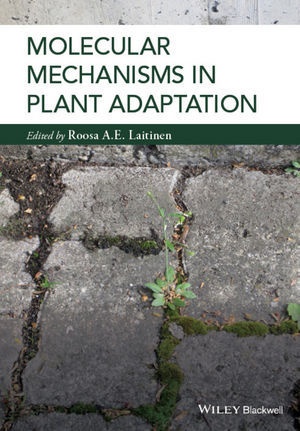Read more
Plants are forced to adapt for a variety of reasons-- protection, reproductive viability, and environmental and climatic changes. Computational tools and molecular advances have provided researchers with significant new insights into the molecular basis of plant adaptation. Molecular Mechanisms in Plant Adaptation provides a comprehensive overview of a wide variety of these different mechanisms underlying adaptation to these challenges to plant survival.
Molecular Mechanisms in Plant Adaptation opens with a chapter that explores the latest technological advances used in plant adaptation research, providing readers with an overview of high-throughput technologies and their applications. The chapters that follow cover the latest developments on using natural variation to dissect genetic, epigenetic and metabolic responses of plant adaptation. Subsequent chapters describe plant responses to biotic and abiotic stressors and adaptive reproductive strategies. Emerging topics such as secondary metabolism, small RNA mediated regulation as well as cell type specific responses to stresses are given special precedence. The book ends with chapters introducing computational approaches to study adaptation and focusing on how to apply laboratory findings to field studies and breeding programs. Molecular Mechanisms in Plant Adaptation interest plant molecular biologists and physiologists, plant stress biologists, plant geneticists and advanced plant biology students.
List of contents
Chapter 1: Introduction
Dr. Roosa Laitinen, Max Planck Institute of Plant Molecular Physiology, Germany
Chapter 2: Technological advances in studies of plant adaptation
Dr. Norman Warthmann, The Australian National University, Australia
Dr. Korbinian Schneeberger, Max Planck Institute for plant breeding, Cologne, Germany
Dr. Alisdair Fernie, Max Planck Institute of Plant Molecular Physiology, Germany
Chapter 3: Mechanisms of plant responses to abiotic stresses
Dr. Mikael Brosché, Division of Plant Biology, University of Helsinki and University of Tartu, Estonia
Chapter 4: Mechanisms of pathogen response in plants
Dr. Shauna Somerville, Department of Plant Biology, Stanford University, USA
Dr. Joy Bergelson, University of Chicago, USA
Prof. Jane Glazebrook, Department of Plant Biology, University of Minnesota, USA
Chapter 5: Role of small RNAs in regulation of plant responses to stress
Dr. Jia-wei Wang,Institute of Plant Physiology and Ecology, Shanghai Institutes for Biological Sciences, Shanghai, China
Dr. Sascha Laubinger, Center for Plant Molecular Biology, University of Tübingen, Germany
Chapter 6: Adaptation of flowers
Dr. Victor A. Albert, Department of Biological sciences, University of Buffalo, USA
Prof. Paula Elomaa, Department of Agricultural sciences, University of Helsinki
Prof. Teemu Teeri, Department of Agricultural sciences, University of Helsinki
Chapter 7: Epigenetic mechanisms in adaptive traits
Dr. Vincent Colot, Department of Biology, IBENS, France
Prof. Dr. Isabel Bäurle, Institute of Biochemistry and Biology, University of Postdam, Germany
Chapter 8: Use of natural variation in Arabidopsis thaliana to study adaptation
Dr. Roosa Laitinen, Max Planck Institute of Plant Molecular Physiology, Potsdam, Germany
Chapter 9: Modeling in understanding mechanisms of adaptation
Dr. Zoran Nikoloski, Max Planck Institute of Plant Molecular Physiology, Potsdam, Germany
Chapter 10: Translational prospects, field trials and applications in plant breeding
Dr. Roosa Laitinen, Max Planck Institute of Plant Molecular Physiology, Potsdam, Germany
Dr. Karin Köhl, Max Planck Institute of Plant Molecular Physiology, Potsdam, Germany
About the author
Roosa Laitinen is the Research Group Leader of Molecular Mechanisms of Adaptation at the Max Planck Institute of Molecular Plant Physiology. Dr. Laitinen has published widely in the area of plant adaptation in publications including
Nature,
Plant Physiology, and
Journal of Experimental Biology.
Summary
Plants are forced to adapt for a variety of reasons protection, reproductive viability, and environmental and climatic changes. Computational tools and molecular advances have provided researchers with significant new insights into the molecular basis of plant adaptation.

